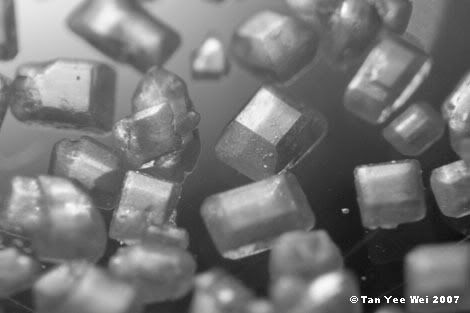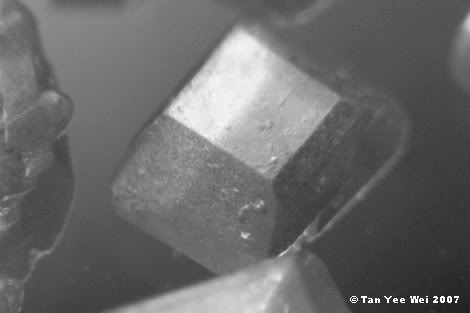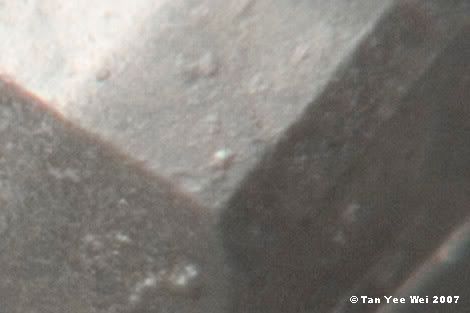Sugar crystals

Click here for large size image
Having the optics of a microscope but no specimen stage nor a proper light source is extremely annoying. That means I have to attach my specimens to a clear plastic ruler, stand it between two heavy objects and shine my halogen study lamp on it.
The huge magnifications sought generally require a bright light source to get decent exposure times, and the desk lamp does not really cut it. With camera shake a real hazard (depressing the shutter button is enough to cause vibrations that are serious enough to make a mess of the photo. The system is so sensitive that even with a decent tripod, the 10 s self timer is insufficient for vibrations to fall to an acceptable amplitude), focusing and exposure are generally hit-and-miss pot shots.

A close up of the preceding image
Using the several CD boxes, I constructed a mirror assembly and a specimen stage. With a diagonal mirror holder (I made do with aluminium foil) and a horizontal specimen stage, it allowed a much faster set up time. Horizontally directing the intense beam of a slide projector onto the mirror, the specimen is illuminated from below.
The projector’s beam was impressive. Its intensity allowed exposures faster than 1/1000 s at full aperture and 1/60 s stopped down. Camera shake was no longer a problem.
The photograph here was taken by reverse-mounting a Super-Takumar 1.4/50mm over a Panasonic FZ30. The Super-Takumar was stopped down to f4 to improve depth of field (further reducing the aperture would introduce horrible vignetting) and the FZ30 stopped down to f11. Only the green channel was used to produce these monochromatic image.

A 100% crop the preceding image
Due to the many glass elements within the optical system, refraction eventually results in light of different wavelengths (colours) projected differently on the sensor. Amazingly, the image in the red channel has a slightly higher magnification that the green and blue channels. This minor mismatch in projected images results red and purple fringes on out-of-focus highlights.
Labels: microscopy, photographic equipment, photography

<< Home